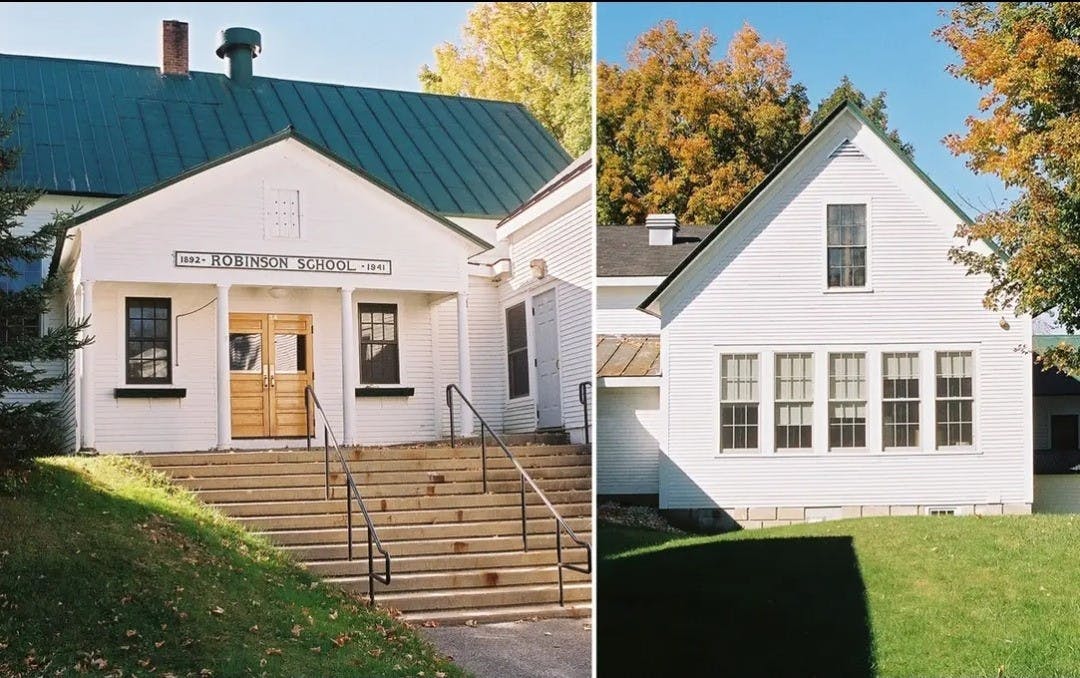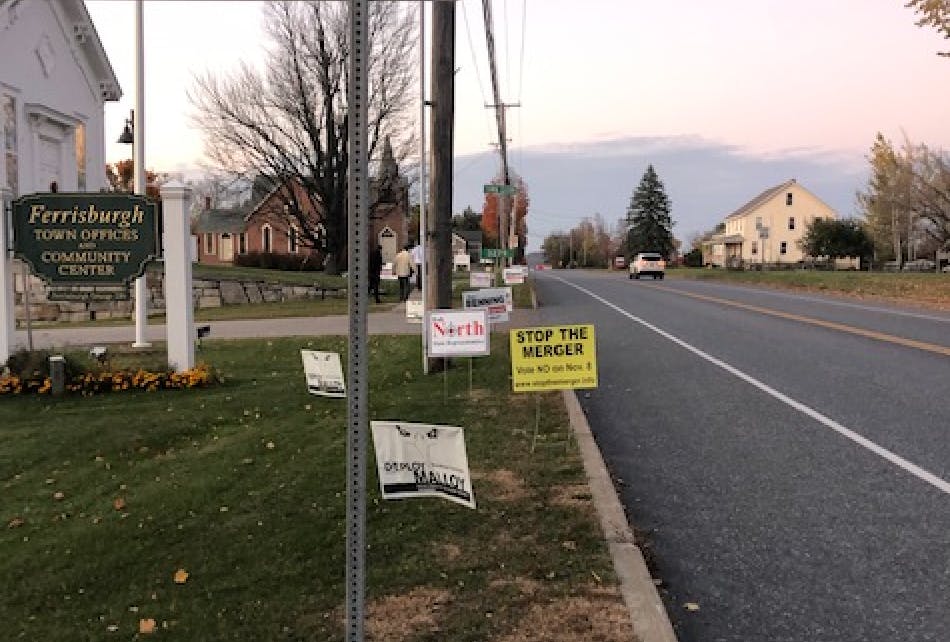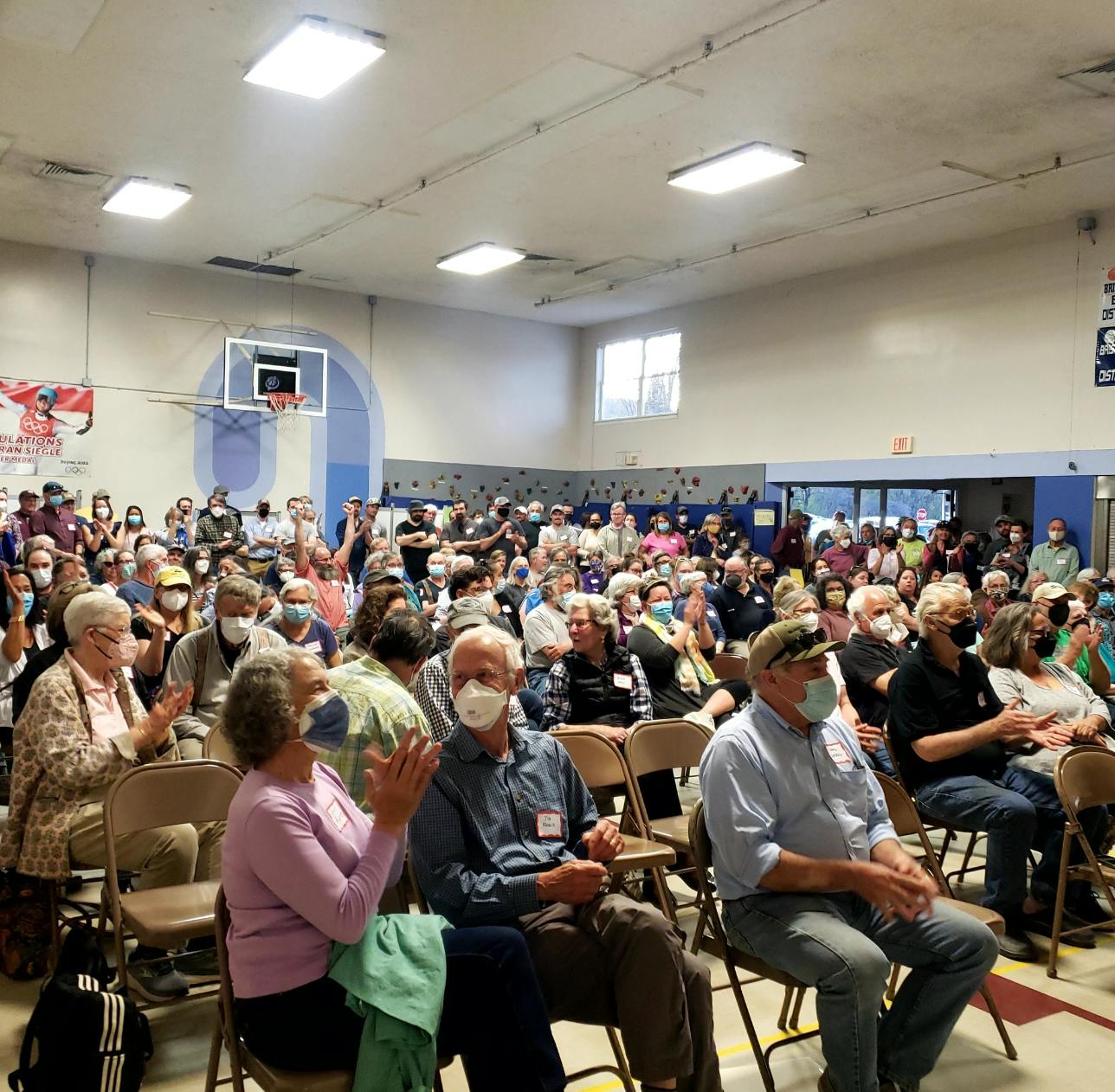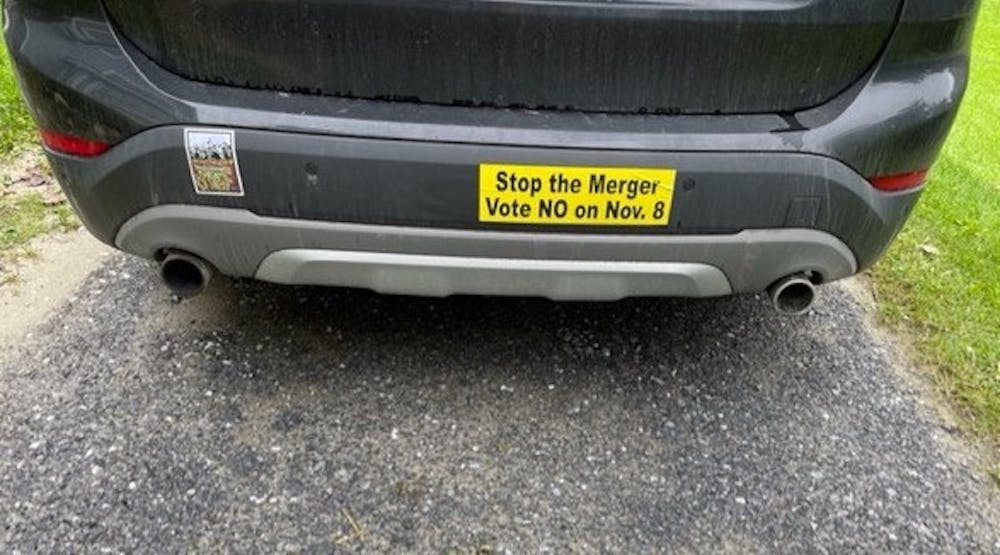As millions of Americans cast their midterm ballots across the country on Tuesday, Nov. 8, residents of the nine Vermont towns that compose the Mount Abraham Unified School District (MAUSD) and the Addison Northwest School District (ANWSD) decisively rejected a proposal to merge districts in a 4,282 to 1,886 vote.
In response to low student enrollments, the idea to merge was initially proposed in December of 2020 by MAUSD Superintendent Patrick Reen alongside a bid to repurpose three elementary schools. Uniting the two school districts through the merger was offered as a way to consolidate resources, centralize administration and cut costs as enrollment dwindles and inflation strains school budgets. According to members of a Merger Study Committee, which formed in May 2021, a merger could have saved 5 million dollars annually by eliminating roughly 42 positions, including 11 central office positions.
“While still a difficult budgetary consideration, this merger [would limit] the number of positions that will need to be reduced compared to each individual district’s projections,” reads the Merger Study Committee Report & Articles of Agreement.

“The problem of declining enrollment is most evident at our high school where approximately 76% of our high school classes are below the class size minimums set in policy, and 27% have enrollments in the single digits,” Sheila Soule, superintendent of ANWSD wrote in an email to The Campus. “It is very difficult to maintain the current slate of course offerings with such low numbers. A merger would have provided an opportunity to more flexibly staff or develop programs in the region without eliminating course offerings.”
In MAUSD, low enrollments present a similar problem.
“We have seen a decline in our enrollment at the secondary level over the past several years and are expecting an even steeper decline at the secondary level in the coming several years,” Reen wrote in an email to The Campus, “We are projecting F[iscal] Y[ear] [20]24 to have approximately 160 fewer students than FY18.”
Although a decline of 160 students might not seem significant, Reen noted that each student within MAUSD represents approximately $20,000 in the district’s ability to spend state-allocated funds without increasing the tax rate. In these terms, a loss of 160 students by 2024 would mean the district could spend roughly $3 million less on education in 2024 than it did in 2018, necessitating cuts to staff and programs that benefit students.
After Reen’s proposal in December, immediate pushback from town residents who opposed a merger led the MAUSD and ANWSD school boards to open the conversation, soliciting proposals from community members on alternative ways to address enrollment and financing issues and hiring consultant Nate Levenson and his firm, New Solutions K-12, to evaluate them. In January of 2021, Levenson issued a report on his findings, which explored possible solutions, some of which involved a district merger and some of which did not.
In May of 2021, after considering Levenson’s report, the school boards voted to assemble a Merger Study Committee. After months of research, Marikate Kelley, co-chair of the Merger Study Committee alongside Martha DeGraaf, says a majority of the group felt that a merger was the best option to address low enrollment and financing. After a committee-wide vote where only one member dissented, they officially proposed the merger.
But on voting day in Bristol, Monkton, New Haven and Starksboro, the towns that MAUSD serves, 62% of voters favored remaining an independent district. Similarly, in Addison, Ferrisburgh, Panton, Vergennes and Waltham, which comprise ANWSD, 72% of voters opposed the merger.

Neily A. Jennings, the parent of two students at Robinson Elementary School, is a member of Starksboro Save Our Schools (SSOS), a bipartisan group of Starksboro residents that has been organizing for this election result since June of 2021.
“We all share the beliefs that small, local schools are highly valuable to students and the surrounding community, that we deserve a right to vote on the future of our schools, and that we can work together to generate creative solutions that both center students and ensure financial sustainability,” Jennings wrote in an email to The Campus.
“Our [group’s] initial efforts were focused on an attempt to withdraw Starksboro from the consolidated Mt. Abraham Unified School District,” wrote Susan Klaiber, another member of SSOS.
During a voice vote on May 10, 2022, Starksboro residents unanimously voted to leave MAUSD. But when one town in the district later failed to approve Starksboro’s motion to leave, SSOS changed course, focusing on trying to stop the merger entirely, circulating information, writing op-eds and posting lawn signs to spread the word.

Herb Olson, who helped galvanize SSOS alongside Nancy Cornell, felt uneasy about the merger due to its potential effect on voting protocols.
“Right after the Merger Study Committee started its work, we became very concerned that they would use that process to take away what we have right now, which is the right to vote before an elementary school is closed,” Olson said.
Under the Articles of Agreement that would have governed a unified district, schools could have been closed with the vote of a two-thirds supermajority of the district, a policy that would have differed from the current process regarding school closure whereby only a school’s town votes on whether or not to close their school, rather than the entire district. For many voters, giving up a town’s full agency to decide on a school closure represented too big of a risk.
“Many, if not most, of the votes opposed to the merger were opposed to a school being closed without the vote of the town in which the school is located,” Klaiber wrote.
While the State of Vermont mails ballots to all registered voters in Vermont for federal and state elections, those voting by mail this election didn’t see the merger question on their ballots.
According to an op-ed by two residents of Monkton, if voters wanted to vote on the merger, they had to request a ballot from their Town Clerk or vote in-person on election day. Critics of the merger noted that this posed a barrier to accessibility for those who wanted to vote on the issue.
“The folks over in Montpelier in the agencies and the state board and even the legislature really kind of decided that they knew better than parents and communities what's best for their students,” Olson said. “And this whole merger election had the full force of state authority and power on its side. What I think is remarkable is the extent to which, in terms of the vote margin, that view was repudiated by folks who were closer to what the situation is at the community level.”
In the wake of the vote last Tuesday, many are feeling relieved.
“[Now] I know that Robinson School can't be closed without a vote of our town, and that helps me feel that Starksboro is a stable place for me to raise kids,” Jennings said.
For Chanda Rochon, another member of SSOS, local schools represent something irreplaceable.
“My grandmother went to Robinson, my mother, myself and now my daughter is also attending the school. The school is where our community's heart is. It is our centerpiece for socialization, growth, education, friendships and trust,” Rochon said.
Others view the decision as a loss of a vital opportunity to benefit students in the long run.
“We still have the same problems, you know, it’s not going away,” Kelley said. “ Our schools are doing pretty good right now, but this work was really to address what's going to happen in the next year or two. You see that in so many issues, like climate change, right? When things are going fine it’s hard to think about change.”
As school boards begin to develop their budgets for the coming year, board members will need to consider creative solutions to respond to financial pressure. According to SSOS organizers, they would be wise to take community input seriously while doing so.
“Our job will be to manage the program reductions the best we can to minimize the impact on students,” Reen said. “But in the end what we offer students four or five years from now is almost certainly going to be less than what we offer now.”
Olivia Pintair '22.5



